Sobaeksan National Park (Gyeongsangbuk-do Region) (소백산국립공원(경북))
13.1 Km 35865 2023-02-17
Punggi-eup, Yeongju-si, Gyeongsangbuk-do
+82-54-638-6196
Sobaeksan National Park was designated as the 18th national park in December 1987. The features of Sobaeksan National Park include wildflowers and royal azaleas in spring and snowy scenery in winter. The mountain borders three provinces and four cities. Attractions include various peaks, temples, and waterfalls. The mountain is especially popular in May when royal azaleas are in full bloom and a natural forest tunnel is formed. Birobong Peak of the mountain is covered with snow six months of the year and is called the Alps of Korea.
Sobaeksan Punggi Spa Resort (소백산풍기온천리조트)
14.5 Km 6426 2023-10-26
1400 Jungnyeong-ro, Yeongju-si, Gyeongsangbuk-do
+82-54-604-1700
Sobaeksan Punggi Spa Resort, which sits at the foot of Sobaeksan Mountain, has a wide variety of facilities and amenities, as well as a great view. The resort has an outdoor spa, a 25-square-meter outdoor swimming pool, Aqua Pool ride, a wading pool, a bade pool, and Yeonhwajeong, a great restaurant to enjoy delicious Korean food.
There is also a great spot to have an outdoor barbeque party with family and friends while enjoying the great taste of hanu (Korean beef). Sobaeksan Punggi Spa Resort aims to be the best spa resort for locals as well as tourists.
Jukgyegugok Valley (죽계구곡)
14.7 Km 33246 2017-12-22
Jukgye-ro 315beon-gil, Yeongju-si, Gyeongsangbuk-do
Jukgyegugok Valley is the valley stretching from Baejeom-ri to Choamsa Temple.
Joseon-era Confucian scholar Toegye Yi Hwang (1501-1570) was inspired by the
scenery of the valley and the enchanting sound of the flowing water, so he came
up with names for each of the nine sections of the valley and collectively called
them Jukgyegugok (nine bamboo valleys). The valley presents a splendid sight
indeed with crystal clear waters, lush forest, and white rocks. In summer, vacationers
from around the country flock to Jukgyegugok Valley to cool off from the sweltering
heat by dipping their feet in the refreshing waters of the valley. Famous tourist
attractions near the valley include Sosuseowon Confucian Academy, Buseoksa Temple,
and Eupnaeri Mural Tomb.
* Choamsa Temple
On the path that ascends from Jukgyegugok Valley, there is a small temple
located at the foot of Sobaeksan Mountain. The great monk Uisang Daesa of the
Silla Kingdom reached this place during his search for an ideal site to build
a Buddhist temple invoking national security. He set up a small thatched hut
for a temporary stay until he found the most propitious spot, on which he built
Buseoksa Temple. In the site where his thatched hut once stood, he built another
temple and named it Choamsa Temple. The original structure was destroyed by
fire during the Korean War (1950-1953). The temple has been restored to its
present state by the Buddhist monk Lee Bo-won after years of arduous efforts.
Choamsa Temple - Yeongju (초암사(영주))
15.5 Km 9012 2020-03-27
330, Jukgye-ro 315beon-gil, Yeongju-si, Gyeongsangbuk-do
+82-54-633-2322
In search of a great place to build a Buddhist Temple invoking national security, Great Monk Uisang travelled around the country and reached this place. He built a small thatched hut here for a temporary stay and continued his search. Finally, he found a perfect place and built Buseoksa Temple. He also set up another temple in the site where his small thatched hut was and called it Choamsa Temple. Choamsa Temple is located below the valley in the south of Gungmangbong Peak of Sobaeksan Mountain. After the Korean War, the temple building had to be rebuilt, but it managed to preserve some of Provincial Tangible Cultural Asset including Samcheung Seoktap (a three-storied stone pagoda; Tangible Cultural Property 126), Dongbudo (East Stupa; Tangible Cultural Property 128) and Seobudo (West Stupa; Tangible Cultural Property 129).
* Jukgyegugok Valley
The valley stretching from Baejeom-ni to Choamsa Temple is called Jukgyegugok which Sobaeksan Mountain surrounds like a folding screen. Near the valley, one can find famous tourist attractions such as the Sosuseowon Confucian Academy and Buseoksa Temple. Toegye Yi Hwang came up with the name Jukgyegugok inspired by the fantastic scenery of the valley and the beautiful sound of the flowing water.
Yecheon Hot Spring (예천온천)
16.1 Km 11221 2020-03-20
27, Oncheon-gil, Yecheon-gun, Gyeongsangbuk-do
+82-54-650-6588
Yecheon Hot Spring is one of the top three hot springs of Gyeongsangbuk-do along with Punggi Hot Spring and Mungyeong Hot Spring. From Yecheon, you can also visit nearby attractions in Yeongju and Bonghwa. Yecheon Hot Spring opened on March 24, 2000 and is proud of its clean and gentle waters, which make skin soft and smooth by removing built-up cells. The nutrients in the water also have anti-aging properties.
The facility completed renovations on both the men's and women's saunas on September 28, 2012, adding outdoor hot tubs that are roughly 100㎡ in size to accommodate more people wishing to enjoy the Korean spa experience.
Yeongju Birosa Temple (비로사 (영주))
16.6 Km 17872 2021-06-11
661-29, Samga-ro, Yeongju-si, Gyeongsangbuk-do
+82-54-638-5033
Birosa Temple is located at the southern foot of Birobong, the highest
peak of Sobaeksan Mountain. It was founded by revered Buddhist monk Uisang Daesa in the 20th year of King Munmu’s reign (AD 680) during the Silla Kingdom. The temple’s Buddha statues and the flagpole supports reveal the long history of this ancient temple.
To the left of the entrance to Birosa Temple stand a pair of flagpole supports. The 4.8-meter-high flagpole supports facing each other have a meticulous structure. Inside the temple precincts is Jingongdaesa Bobeoptapbi, a stele with a stone turtle base erected in honor of the great monk Jingong Daesa.
The temple enshrines the Amitabha and Vairocana Buddha statues, which were created during the Silla Kingdom in the late 9th century. Both of these Buddha statues realistically depict the human form, and show similar characteristics, which reveal that they were crafted by the same artisan. Preserving such valuable cultural heritages, Birosa Temple also has a serene view of Birobong Peak on
Sobaeksan Mountain.
* Major cultural properties: Stone Seated Amitabha and Vairocana Buddha Statues (Treasure No. 996), Samgadong Stone Flagpole Supports (Provincial Tangible Cultural Property No. 7)
Hakgasan Recreational Forest (학가산자연휴양림)
17.1 Km 24487 2021-06-15
210, Hyuyangnim-gil, Yecheon-gun, Gyeongsangbuk-do
+82-54-652-0114
Hakgasan Recreational Forest is located in a valley on the northern side of Hakgasan Mountain, known for its clean air. The recreational forest has log cabins that harmonize with the nearby trees, creeks, and rocks, making visitors feel as if they are resting at a luxury villa. It is an ideal vacation destination for those who want to get closer to nature. There is a hiking path leading to the summit of Hakgasan Mountain from the forest, taking around 2 hours. Additional amenities within the forest include campfire pits, an outdoor stage, children's playground, exercise equipment, water play area, a lecture hall, and more.
Yecheon Astro-Space Center (예천천문우주센터)
17.7 Km 14850 2021-12-23
1078, Chunghyo-ro, Yecheon-gun, Gyeongsangbuk-do
+82-54-654-1710
Yecheon Astro-Space Center is a theme park that opened in November 2004. The Yecheon Astronomical Science and Culture Center has built and operated the Yecheon Star Observatory. Visitors can stay in the accommodations in the park, observe the distant universe through a large telescope, and experience the space environment such as weightlessness.
In the observation room, visitors can observe the appearance of the universe with a 508 mm (20 inch) reflecting telescope that is automatically controlled by a computer. In the auxiliary observation room, visitors can observe sunspots and huge pillars of fire on the surface of the sun with a quadruple solar telescope. The astronomical projection room is a 'space theater' where a digital astronomical projector and video projector are installed, and images related to the astronomical universe, including seasonal constellations, are screened on a hemispherical dome screen on the ceiling.
At the Yecheon Star Observatory, visitors can observe the pillars of fire that soar through the sun during the day and sunspots that are larger than Earth. At night, visitors can observe the galaxy, the nebula, where stars born and die, as well as star clusters, and the moon, which is the closest celestial body to Earth, has large and small meteorite craterson the surface. There are many more fun experiences at the Yecheon Star Observatory.
Huibangsa Temple (Yeongju) (희방사(영주))
18.0 Km 18686 2024-03-08
278 Jungnyeong-ro 1720beon-gil, Punggi-eup, Yeongju-si, Gyeongsangbuk-do
Huibangsa Temple is a temple located at an altitude of 850 meters in a valley south of Yeonhwabong Peak within Sobaeksan National Park. Founded in 643, it preserves the first Korean Buddhist scripture, the "Worinseokbo," and traditional Korean architectural styles. Surrounding areas are adorned with Sobaeksan Mountain's forests, offering opportunities for forest bathing and hiking. Flowing through the valley is a stream, adjacent to which stands the Huibangpokpo Falls, towering at 28 meters high.
Bonghwa Pavilion Culture Center[Korea Quality] / 봉화정자문화생활관[한국관광 품질인증]
18.6 Km 0 2023-06-10
88 , Buraengi-gil, Bonghwa-gun, Gyeongsangbuk-do
+82-54-679-6963
Visitors to the Bonghwa Pavilion Cultural Residence Center can experience the Nujeong culture firsthand during their stay in the Solhyangchon, which is set in Oesam-ri, Bonghwa-gun, Gyeongsangbuk-do, and is themed around traditional towers and pavilions. Solhyangchoin can be divided into pensions and guest rooms, and reservations can only be made through the Bonghwa-gun Sports Facility Office's website. The pavilion exhibition hall, the pavilion garden, the pavilion rest area, and the dormitory yard are also available for your use. Nearby tourist attractions include Changpyeong Forest Park, Dadeok Mineral Spring Tourist Site, and Munsusan Natural Recreation Forest.

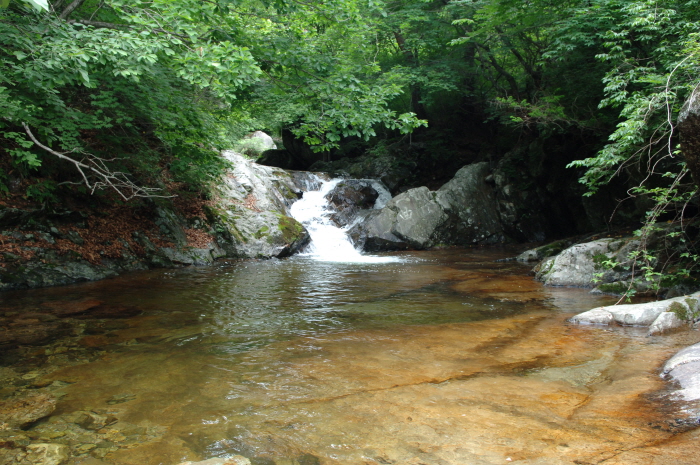
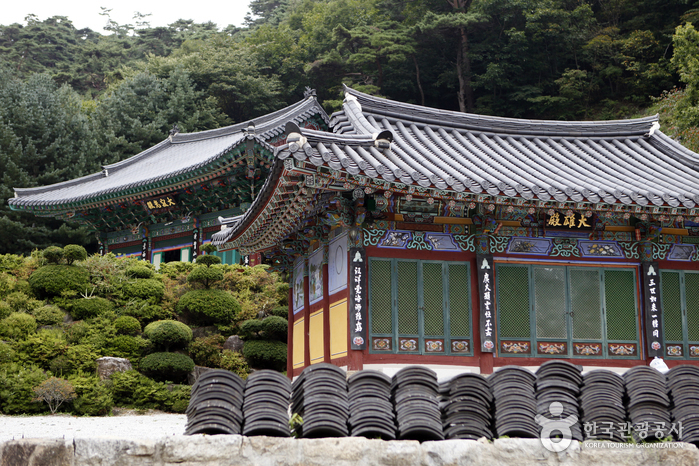
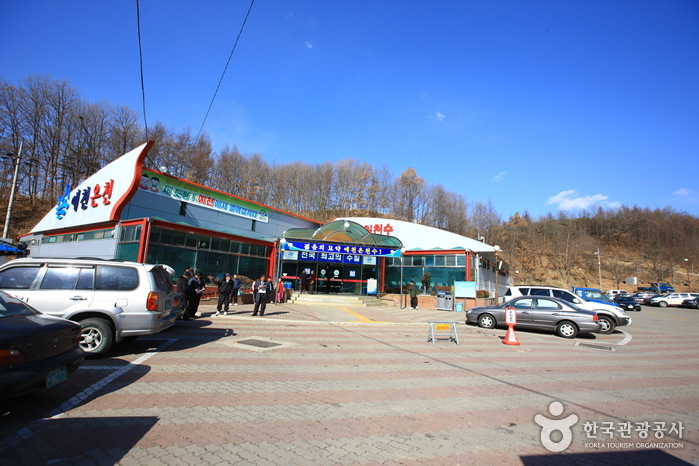
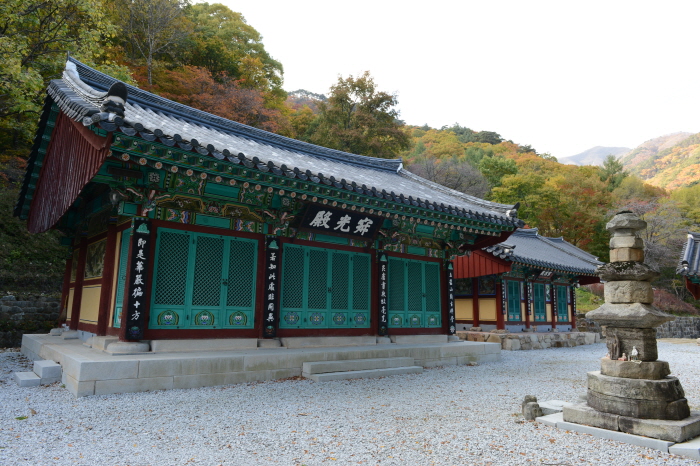
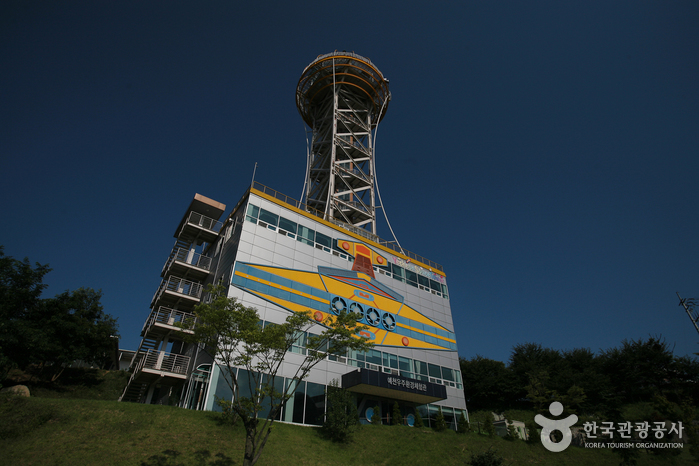
 English
English
 한국어
한국어 日本語
日本語 中文(简体)
中文(简体) Deutsch
Deutsch Français
Français Español
Español Русский
Русский